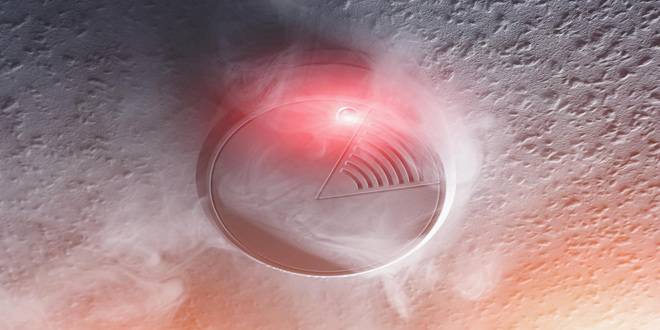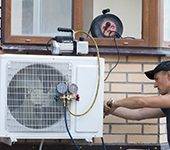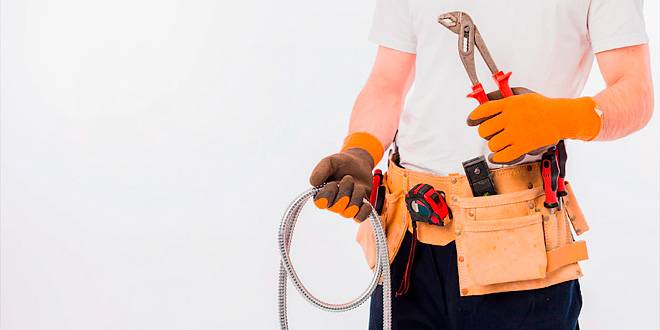
Imagine starting your day feeling unwell, experiencing unexpected headaches, nausea, or dizziness, and not knowing the cause. These symptoms could indicate something lurking in your environment, invisible and potentially deadly: carbon monoxide (CO). As a colorless, odorless gas, carbon monoxide can leak from various sources within your home or commercial building, posing a serious risk to health and safety. Recognizing these signs and understanding the risks associated with CO is the first step toward prevention.
Understanding Carbon Monoxide and Its Risks 🌫️⚠️
Carbon monoxide (CO) is a stealthy adversary in our homes and workplaces. Known as the “silent killer,” CO is an invisible, odorless, and tasteless gas that can cause severe health problems and even death if inhaled in significant quantities. Produced by the incomplete combustion of carbon-containing materials, it can emanate from several common sources, including malfunctioning furnaces, boilers, water heaters, and vehicle exhausts. Understanding the risks associated with carbon monoxide is crucial for ensuring fresh air and the safety and well-being of everyone in potentially affected environments.
The Danger of CO Exposure
The danger of carbon monoxide lies in its ability to bind with hemoglobin in the blood, forming carboxyhemoglobin, which significantly reduces the blood’s capacity to carry oxygen. This deprivation of oxygen to the body’s organs and tissues can lead to various symptoms and health issues, depending on the concentration and duration of exposure. Short-term exposure to low levels of CO can result in symptoms that often mimic those of the flu, including headaches, dizziness, weakness, nausea, confusion, and fatigue. However, unlike the flu, CO poisoning does not cause a fever. Prolonged or high-level exposure can lead to more severe symptoms, including impaired vision and coordination, chest pain, and, in extreme cases, unconsciousness, brain damage, and death.
Recognizing the Symptoms
Recognizing the symptoms of CO poisoning is the first step in preventing serious health consequences. It’s important to be aware that everyone is at risk, though infants, the elderly, and individuals with chronic heart disease, anemia, or respiratory problems are more susceptible to its effects. Symptoms can vary widely from person to person and may appear suddenly or develop gradually over time, making awareness and prompt action essential.
Common Sources of Carbon Monoxide in Homes and Commercial Buildings 🏠🏢🔥
Identifying and understanding the common sources of carbon monoxide (CO) in residential and commercial settings is a critical step in preventing CO exposure and ensuring the safety of occupants. Carbon monoxide is produced by the incomplete combustion of fossil fuels, which can occur in various household and commercial appliances. Being aware of these sources can help in implementing effective measures to reduce the risk of CO leaks.
Heating Systems: A Primary Culprit
One of the most common sources of carbon monoxide in buildings is the heating system, including furnaces, boilers, and water heaters. Suppose these systems are improperly installed, poorly maintained, or inadequately ventilated. In that case, they can produce carbon monoxide gas at dangerous levels. Regular maintenance by certified professionals, like our team at Supreme Heating and Air Conditioning, is essential to ensure these systems operate safely and efficiently.
Gas Appliances and Equipment
Gas stoves, ovens, dryers, and fireplaces are also potential sources of CO. While these appliances are generally safe when used correctly and vented properly, malfunctioning equipment or blocked vents can lead to harmful CO buildup. It’s vital to have these appliances checked regularly to prevent any issues.
Garages and Vehicle Exhaust
Running vehicles in attached garages can quickly fill the garage and your home with CO, even if the garage door is open. This situation poses a significant risk, as CO can seep into living spaces, endangering occupants. Ensuring vehicles are never left running in or near enclosed spaces is a simple yet effective way to prevent CO exposure.
Generators and Power Equipment
During power outages, gasoline, diesel, or propane generators can be a lifesaver, but these devices must be used cautiously. Operating a generator inside or too close to your home or business can lead to CO accumulation. Always place generators outdoors, away from windows, doors, and vents, to minimize the risk of CO entering the building.
The Role of HVAC Systems

Properly functioning and well-maintained HVAC systems are crucial in preventing carbon monoxide leaks. These systems, when serviced regularly, can ensure adequate ventilation and air exchange, reducing the likelihood of CO buildup. At Supreme Heating and Air Conditioning, we prioritize your safety by providing comprehensive HVAC services designed to maintain optimal air quality and system performance.
How To Prevent Carbon Monoxide Poisoning 🛑🔧🌡️
Preventing carbon monoxide exposure requires a proactive approach to maintenance and safety practices within homes and commercial spaces. Implementing these preventive measures can significantly reduce the risk of CO poisoning, ensuring a safer environment for everyone. Here are essential steps to take to minimize the threat of carbon monoxide leaks.
Regular Maintenance of Heating and Cooling Systems

One of the most effective ways to prevent CO leaks is through regular maintenance of your heating and cooling systems. Annual check-ups by a qualified HVAC technician can identify and rectify potential issues before they become hazardous. Our team at Supreme Heating and Air Conditioning specializes in such preventative maintenance, ensuring your systems are efficient and safe from producing CO.
Installing a Carbon Monoxide Detector
Installing carbon monoxide detectors on every level of your home or business, including near sleeping areas, is critical. These detectors can provide an early warning of CO presence, allowing for quick evacuation and action. It’s important to test these detectors regularly and replace the batteries at least once a year or according to the manufacturer’s instructions.
Ensure Proper Ventilation
Proper ventilation is crucial in preventing the buildup of carbon monoxide. Ensure all fuel-burning appliances are vented directly to the outside, away from windows and ventilation intakes. Regularly inspect vents and chimneys for blockages, corrosion, or disconnections that could impede proper venting.
Safe Use of Appliances
Always follow manufacturer guidelines for the safe operation of fuel-burning appliances. Never use outdoor grills or generators inside your home, garage, or near windows or doors. Ensure that your vehicle’s exhaust pipe is not blocked by snow or debris, especially during the winter months, to prevent CO from accumulating inside the vehicle.
Educate Everyone About CO Safety
Educating your family or employees about the dangers of carbon monoxide and how to prevent exposure is essential. Knowledge about the symptoms of carbon monoxide poisoning, the importance of CO detectors, and the need for regular maintenance can empower individuals to take action and potentially save lives.
What to Do If You Suspect a Carbon Monoxide Leak 🚨🤔🔍
Recognizing a potential carbon monoxide (CO) leak and knowing how to respond can be life-saving. If you suspect a CO leak in your home or commercial space, it’s crucial to act immediately to protect yourself and others from potential poisoning. Here are the steps you should follow if you think there might be a carbon monoxide leak:
1. Evacuate the Area Immediately
Your first priority should be to get yourself and others out of the affected area as quickly as possible. Do not attempt to locate the source of the leak; your safety is more important. Once outside, account for all occupants and ensure no one is left inside.
2. Call Emergency Services
Once you are safe, call 911 or your local emergency services to report the suspected CO leak. Inform them that you believe there may be carbon monoxide in your building and request immediate assistance.
3. Do Not Re-Enter the Building
It’s essential to stay outside and away from the building until emergency responders have arrived, conducted a thorough check, and confirmed it’s safe to return. Carbon monoxide is a serious health hazard, and re-entering the building too soon could put you at risk of exposure.
4. Seek Medical Attention
If you or anyone else is experiencing symptoms of CO poisoning, such as headaches, dizziness, nausea, or confusion, seek medical attention immediately, even if the symptoms are mild. Let the medical personnel know that CO exposure is suspected, as this will inform their treatment approach.
5. Have Your Building Inspected and the Leak Repaired
Before resuming normal activities in the building, have a professional inspect your HVAC systems and any other potential sources of carbon monoxide. Supreme Heating and Air Conditioning can help identify the cause of the leak and perform necessary repairs or adjustments to prevent future incidents. Ensuring that your systems function correctly and safely is crucial in avoiding repeat exposures.
Carbon Monoxide Safety Considerations for Warren, Martinsville, and Bridgewater, NJ, and Surrounding Areas ⚠️🏠🛡️
Residents of Warren, Martinsville, and Bridgewater, NJ, and surrounding areas face unique regional challenges that can impact carbon monoxide safety. Understanding these specific considerations can help locals implement more effective strategies to prevent CO exposure. Here, we highlight some tailored advice for ensuring carbon monoxide safety in these areas.
Weather-Related Risks
The climate in Warren, Martinsville, and Bridgewater can vary dramatically with the seasons, affecting how residents use their heating systems. Cold winters often mean homes and businesses are tightly sealed for energy efficiency, which can, unfortunately, trap carbon monoxide inside if appliances malfunction. Ensuring your heating system, including furnaces and boilers, is inspected and serviced annually by a professional like Supreme Heating and Air Conditioning, which is crucial for safe operation during the heating season.
Local Building Codes and Regulations
Each of these New Jersey communities may have specific building codes and regulations regarding installing and maintaining HVAC systems and carbon monoxide detectors. Staying informed about and compliant with these local regulations not only enhances safety but can also prevent legal issues. We recommend consulting with HVAC professionals familiar with the local codes in Warren, Martinsville, and Bridgewater to ensure your systems meet all requirements.
Community Resources and Support
Leveraging community resources, including local health and fire departments, can provide additional support and information on carbon monoxide safety. These resources often offer educational materials, safety checks, and sometimes even free or discounted carbon monoxide detectors to residents. Engaging with community safety initiatives can enhance your overall preparedness.
Tailored Solutions for Local Residents
Understanding the specific needs and challenges of living in Warren, Martinsville, and Bridgewater allows us to provide tailored solutions for our clients. Whether it’s ensuring your HVAC system can handle the local climate efficiently or offering financing options for necessary upgrades, we aim to ensure every resident has access to safe, reliable heating and cooling services.
Take Action Against CO ⚠️🚨

Ensure your home and business in Warren, Martinsville, and Bridgewater, NJ, are safe from carbon monoxide. Contact Supreme Heating and Air Conditioning today to schedule your HVAC system’s inspection and maintenance. Let us help you breathe easier with professional, reliable service. Your safety is our priority. Act now for peace of mind 🏠✅🛡️.


